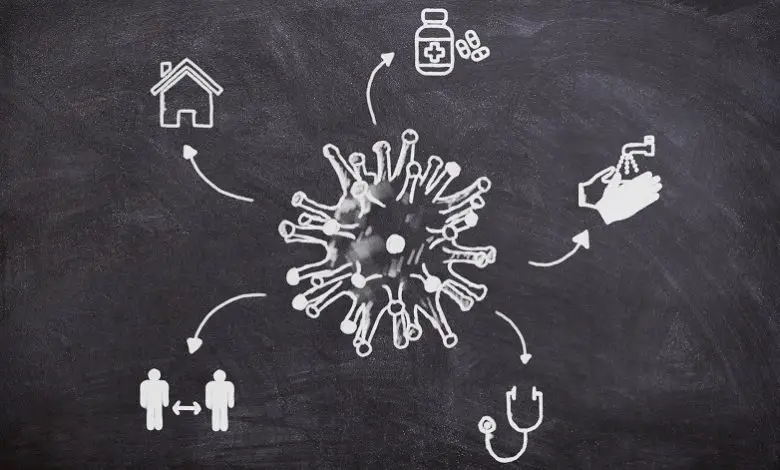
58% of disabled and chronically ill people feel anxious about the easing of lockdown rules
A survey conducted by Disability Horizons has found that nearly 60% of people feel really anxious about the easing of lockdown restrictions, and 49% feel the same about the changes to the shielding guidelines. Read on to find out what the new shielding guidelines are, discover more about what disabled people really think and read first-hand experiences from people who have been shielding.
After the relaxation of some lockdown rules in June, the start of July saw parts of the UK being able to do even more in a bid to move toward a new ‘normal’.
The lockdown changes included the reopening of many museums, restaurants, pubs, hairdressers and other amenities, as well as people being allowed to meet up more and even stay overnight at each other’s houses.
The Government has also set out steps to relax shielding guidelines for people who are ‘clinically extremely vulnerable.’
What are the changes to the shielding guidelines?
From Monday this week (6th July 2020), the Government advised that people shielding in England:
- may meet in a group of up to six people outdoors, including people from different households, while maintaining strict social distancing
- no longer need to observe social distancing from other members of their household
- can form a ‘support bubble’ with one other household if you are a single adult (over 18) living alone. This is also the case if you are a single parent with dependent children. All those in a support bubble will be able to spend time together inside each other’s homes, including overnight, without needing to socially distance. This is the same as guidance for all of England.
It has also advised that children who are ‘clinically extremely vulnerable’ should continue to shield at home until August, and that you should talk to your paediatric specialist or GP before stopping doing so.
From 1st August 2020, the Government will be pausing shielding in England and instead advising people to adopt strict social distancing. This means you will be able to:
- go to work, as long as the workplace is Covid-secure – but carry on working from home if you can
- go outside to buy food, to places of worship and for exercise, but you should maintain strict social distancing.
It does also assert that you should, “Stay at home as much as you can and continue to take precautions when you do go out.” This includes washing your hands regularly, avoiding touching your face and keeping two metres away from people outside of your household or bubble wherever possible.
Children who are ‘clinically extremely vulnerable’ can attend school when their peers do.
Scotland changed its shielding guidelines from 10th July 2020 and plans to also pause shielding on 1st August 2020.
Shielding is scheduled to be paused in Northern Ireland on 31st July 2020. In Wales, people are advised to continue shielding until 16th August 2020.
You can find out more about the guidelines in England for people who are ‘clinically extremely vulnerable’ and social distancing rules on the Government website.
If you’re unsure whether you’re in the ‘clinically vulnerable’ or ‘clinically extremely vulnerable’ groups, visit our full guide to shielding and isolating.
Lockdown and shielding changes: how disabled people really feel

At the beginning of July, we ran a survey of 267 people across the UK to find out their thoughts on coming out of lockdown and the changes to the shielding guidelines.
We spoke to disabled people and those with health conditions, as well as people living with someone who is disabled or chronically unwell.
58% feel really anxious about the relaxation of lockdown restrictions.
49% are really anxious about the changes to the shielding guidelines.
83% of people who participated in the survey live in England, where the highest number of restrictions have been lifted in the UK so far.
The majority of respondents believe it’s “too much too soon” and that they will make their own decisions on when it’s safe to return to normality. Others have said that they will be cautious until we get a vaccine.
One respondent commented: “I don’t understand how the advice has changed when the situation has not been resolved. No vaccine has yet been found, there is no medication to deal with the virus and the fact that we are having local flare-ups is a sign that it has not gone away.”
Another said: “I don’t understand the changes from August. There has not been enough scientific explanation of why shielders can go from seeing people outside in groups of six to suddenly being able to be indoors for a prolonged period of time. It feels like more of an economic decision rather than placing importance on public health.”
Help to stay safe when out and about with our social distancing lanyard or colourful sash to remind others of the importance of keeping their distance from you.
Being forced back to work
Another concern of people who have been staying at home is being expected to return to work from 1st August.
One respondent is experiencing just that: “I’m being pushed back into work because my employer thinks it is now safe. I work for a charity in a hospital where I’d have to wear full PPE to see patients!”
Another is in a similar situation: “Having spent nearly four months shielding and then being expected to go back to work and carry on as if all is okay is unrealistic. As a result, I am having to consider voluntary redundancy.”
If you’re worried, speak to your employer as soon as possible about your concerns. It may be that you can work from home or that something else can be put into place.
There are also laws that mean your employer has a duty to ensure your workplace Covid-safe, so you shouldn’t be forced to return if it’s not. Visit the Citizens Advice Bureau for more information.
Luckily, not all employers will be unsympathetic. One told us that they will continue to protect their staff: “I think that people need to do what is right for them. We mustn’t assume that the changes mean that everyone shielding will suddenly feel comfortable not to. But I also know that blanket restrictions can be really hard too.”

These changes also mean free food boxes and medicine deliveries from the Government will end at the beginning of August.
One participant said: “It feels like the support is being removed too quickly without a proper structure. It will become very tricky for some people to cope with day-to-day life without having to go out.” Others concurred:
“There is not enough focus on how these changes impact people with disability” and “There should be more support for those who feel they still need to isolate.”
Help from NHS Volunteer Responders will carry on after August, and you will still be eligible for priority supermarket slots if you have registered on the Government website as ‘vulnerable’ by 17th July.
If you’re worried about getting food supplies going forward, visit our guide to shopping safely during the Covid-19 pandemic. For other help and support, see our advice on where to get help if you’re staying at home.
Concerns about others
For some who do feel comfortable enough to go out, they’re reluctant to because of how well others stick to the rules.
One said: “I start my cancer treatment soon and will be even more at risk. I am concerned about all the idiots coming to my county for holidays and bringing their infections with them, making my safe space no longer safe.”
Other people echoed this: “I worry about people’s behaviour and how there is no care around proper social distancing, plus the lack of use of masks when inside shops.”
“We will still be at risk as there are people who flout the social distancing rules.”
If you need to go out but are concerned about people coming too close, we’ve created a social distancing lanyard and sash to help highlight that people need to keep two metres away.
Some more optimistic
37% and 44% of people say they feel fairly happy about the changes to lockdown and shielding, but are a little apprehensive.
3% – just nine people – and 6% (17 people) are really happy about the lockdown and shielding changes.
Some have expressed their need to go out: “I need to be able to go out more for my own mental health and I feel that I have been cooped up long enough.”
“Shielding is good but it can’t go on forever, so a cautious re-entering the real world again, is a good thing.”
Disabled people’s lockdown stories
We also asked members of the DHorizons Tribe Facebook group their thoughts on the new guidelines and whether they’re confident about going out and socialising.
As we have seen in the survey, the majority of people who commented felt the changes are being made too soon. However, some are still thinking of going to outdoor places if they can strictly socially distance. Here are some of their stories.
I plan to stay shielding for now – but I worry about care support
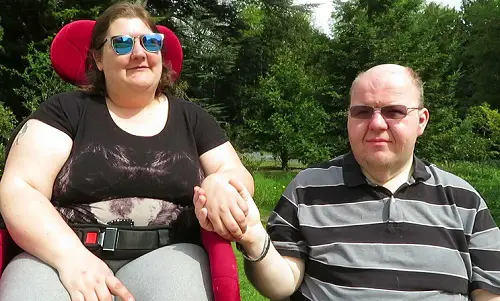
YouTuber, vlogger and disability advocate Stacey Kovaciny from Cambridge has a neuromuscular disease (type X, meaning she has symptoms from various types), epilepsy and brittle or severe asthma. She has been advised to shield by her doctor and hospital specialist.
Stacey says she has no intention of stopping shielding and thinks relaxing lockdown measures is far too soon.
“I have been shielding for three months and I plan on continuing to shield for now. I have been on and off steroids through the whole lockdown. I don’t feel safe to go out as others are not following guidelines.
In addition, how will people know who has been shielding and therefore need to stay further away from?”
Stacey and her husband are also worried about how the easing of lockdown will affect her care support and the risk of carers bringing Covid-19 into their home.
“At the start of Covid-19, we chose to stop my 37 hours of day-time care. We did have a night carer to allow my husband to sleep. The night carer will now have more chance of bringing Covid-19 into our home, no matter what the precautions we have in place.
At one point, we tried a new carer with a new care agency. But her English was so bad she didn’t understand the protocols we had in place to keep me safe. She was not using PPE correctly or washing her hands at all, so we had to let her go.
Right now, we don’t feel it’s safe to allow anyone else into our home. People don’t seem to understand that many are still at risk and shielding for safety.”
If you use personal assistants to help with your care and are concerned about them coming into your home now the rules have relaxed, visit our guide to keeping safe if you use carers and PAs.
I’ll wait to see what happens before I go out

Daisy Holder is a disability history researcher, blogger and captioner from Bristol. She suffers from Lupus, a long-term condition that causes inflammation to the joints, skin and other organs.
She also has Ehlers-Danlos syndromes (EDS), a group of rare inherited conditions that affect connective tissue, and Myasthenia Gravis, which causes muscle weakness.
Daisy was advised to shield as she is on immunosuppressants. With the changes, Daisy says she is going to wait to see whether the changes affect infection and death rates before making any decisions.
“I’ll be watching the next few weeks very carefully to see what happens. I will loosen off into July and August, but not as much as the government is saying.
I will be going outdoors and meeting people from a social distance, probably in parks etc, where I can make sure there’s space around.
I’ll also go for some walks with a mask, but I won’t be going to shops and pubs until I have more faith it’s going to be okay.
I will probably wait for a few weeks after pubs have opened to see how that goes before getting in any further. It gives me the wiggle room to make my own judgement, unless I hear anything different from my doctors.
It’s all certainly affected my mental health. I started off quite stoic about the whole thing – anxiety came later. My flatmate decided to shield as well, which she didn’t have to. So if I go out too much now and get the virus, I’ll feel guilty that it was all for nothing.”
Daisy also raised concerns over the Government’s lack of support to the disabled community during this pandemic. “We have been ignored and neglected, only mentioned six times in all of the government briefings. Plus, just yesterday [24th June], Boris referred again to ‘elderly shielders’.”
It’s really impacted on my mental health
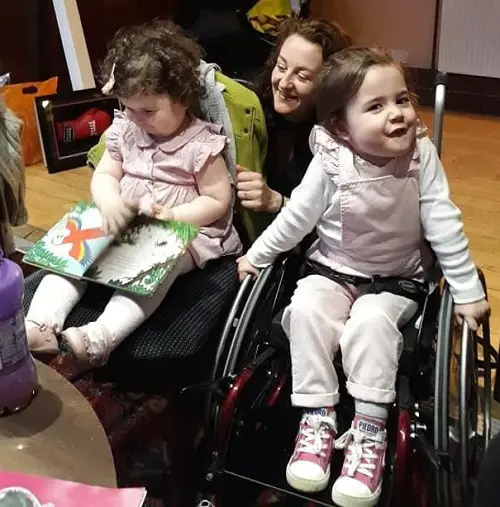
Jessica Bedford has ankylosis spondylitis – a condition where the spine and other areas of the body become inflamed. Her 4-year-old daughter, Lettie, has spinal muscular atrophy Type 2.
They have both been shielding together at home near York, along with Lettie’s three siblings – Devon, who is 3-years-old, and two older brothers Luke, aged 22, and Josh, aged 18.
Jessica has admitted she has continuously worried about the guideline changes:
“The two weeks prior to the Government making its latest announcement about shielding has been really, really hard on my mental health.
Watching people through social media constantly breaking the guidance, and the Government not bothering to give an update when it said it would, sent me into a complete frenzy.
I also couldn’t believe the public’s reaction to people shielding crying out for the update. On social media, people were making comments like: ‘stop whinging’, ‘just go out’, and ‘how is it hard to understand just stay at home?’ It felt like my daughter didn’t matter to anyone.
Now that we have the update, my gut is that it’s too much too soon. I’m also not sure that we have the whole truth on the situation, and the ‘R’ number seems to have conveniently disappeared over the last 14 days.”
Despite her concerns, Jessica is willing to venture out locally with her daughter and potentially invite people for a strict social distant gathering in her garden:
“I do plan to start going for a walk in our village, but anyone daring to come closer than two metres will be getting a piece of my mind. I may go for a drive to a remote spot early on a weekday so that my daughter can see the outside world.
From the 1st August, we may also start allowing family members to visit but stay in the garden at a good distance. I definitely will not be visiting shops or any indoor places, and no one will be coming into our home for any reason.”
Jessica also told us her concerns about Lettie no longer being advised to shield because she is a child, despite her health condition:
“I’m still undecided about school. Lettie was removed from the shielded list on 9th July as apparently children aren’t at as much of a risk. She’s been told to strictly social distance though, but how can she do that when she requires help with all personal care.
I’m extremely scared, upset and angry that if she was an adult with the same condition she would still be on the list, but as she’s a child, we’re supposed to take a chance based on the limited research.”
If you’re concerned about your mental health during this difficult time, try these 7 ways to boost your mental wellbeing now and into the future.
I’m happy to spend time outdoors but not inside public places
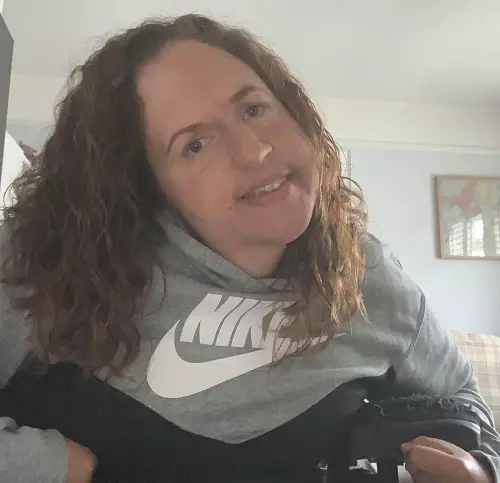
Georgina Moore from South Gloucestershire has been shielding for three months. She has Arthrogryposis, a condition that causes multiple curved joints in areas of the body at birth. She also has scoliosis and torticollis, more commonly known as a twisted neck.
Georgina explained how she is confident to socialise outdoors at a distance, but is still reluctant to visit indoor venues:
“I have been shielding for three months as advised by the NHS and my consultant. I won’t be as relaxed as the Government is suggesting from August 1st, but I will be slightly more lenient.
I feel happy meeting others outdoors (as long as I’m socially distancing from them), as I feel the risk is very low in an outdoor space.
However, I won’t be as relaxed indoors. I still won’t be having visitors to my home and I won’t be venturing out into public indoor spaces. I would simply be constantly worrying if I am in a busy place surrounded by people.
I will only do this when I feel the infection rates are minimal. I think it will take some time before I truly feel safe again. That’s if we don’t get a second wave. Then I’ll be back to square one!”
Social distancing lanyard and sash
To help you feel safer if you choose to go out, especially if you’re concerned that others won’t properly adhere to social distancing guidelines and keep their distance, we have created a social distancing lanyard and sash.
The high-visibility colours and eye-catching designs are an easy way to help those around you understand your need to keep a safe distance at all times.
Large, bold lettering on the sash and lanyard states: ‘KEEP 2M DISTANCE’. The card with the lanyard reads: ‘PLEASE KEEP 2M DISTANCE. I have a health condition and am at higher risk if I catch Covid-19. Thank you.’
The sash is available in two colours – red with white text, or yellow with black text.
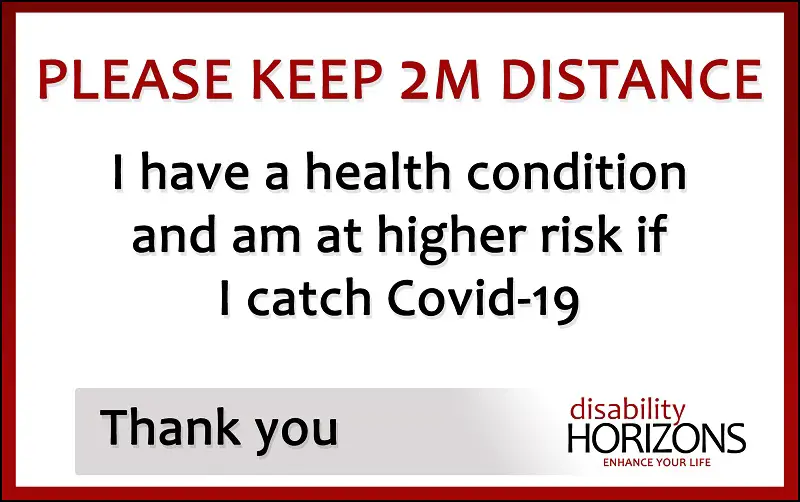
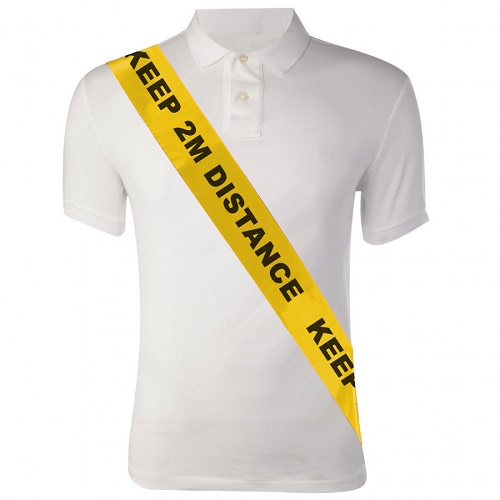
Our sash and lanyard could be particularly useful if you are unable to easily or quickly move away from someone who has come too close, for example, because you use a wheelchair, have limited mobility or are visually impaired.
If you have a hidden disability or condition that makes you at greater risk if you catch Covid-19, it’s also a good way to signal to others that social distancing is important for you.
If you are visually impaired and less able to keep distant from others yourself, it will help alert people to stay away from you.
It would be useful children with health conditions or disabilities and adults who might find it difficult to understand the new rules and importance of social distancing.
Head to the Disability Horizons Shop now to buy our social distancing lanyard and sash.
You can also buy our face mask exempting card if you cannot wear a mask due to health conditions or disabilities.
By Disability Horizons
How do you feel about changes to lockdown and shielding changes? Share your thoughts in the comments box or on Facebook and Twitter.
More on Disability Horizons…
I love the sash. In the same colour scheme as Wide or Overweight Load which as an overweight bloke who uses a wheelchair, appealed to my sense of humour. Then I thought about people with bad eyesight leaning forward to within 2 metres to read what it said.